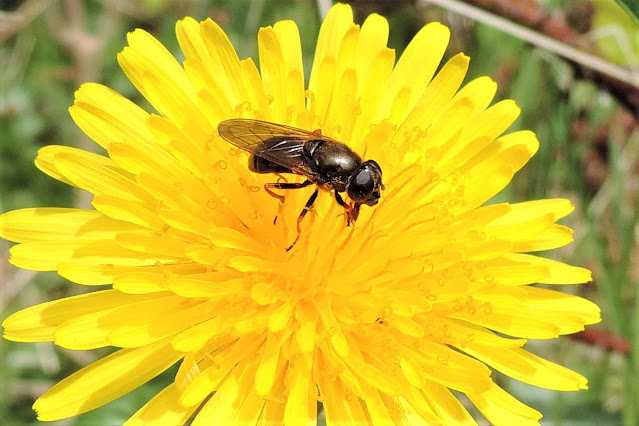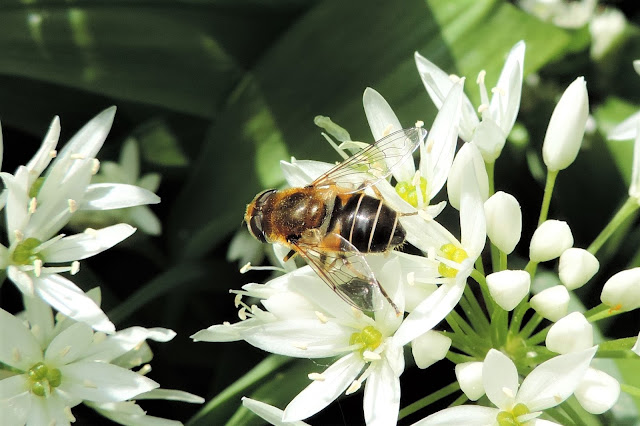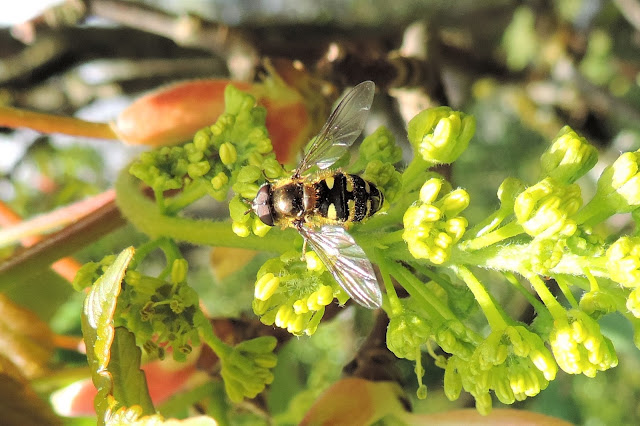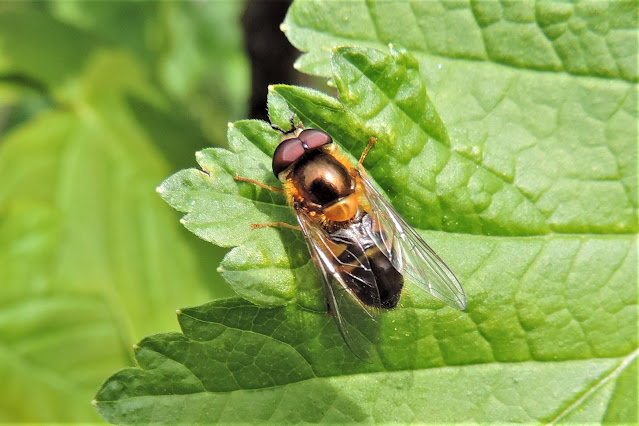Visits to Lletty Brongu and Blaencaerau over the weekend brought in 12 new for the year species in Platycheirus clypeatus, Chrysotoxum cautum, Leucozona lucorum, Cheilosia albitarsis, Cheilosia bergenstammi, Cheilosia Fraterna, Cheilosia illustrata, Sphegina clunipes, Eristalis nemorum, Criorhina berberina, Sericomyia silentis and Syritta pipiens. Taking my year total to 45, which is a very good haul before May. One curious anomaly though is that I have not seen any Episyrphus balteatus so far this year. Meaning any overwintering hoverflies/larva/pupae of this species locally were killed off by the winter cold. It has only happened twice before in 2016 and 2018. When they are abundant due to mild winters "climate change" rears its ugly head as the reason, but silence is the sound from the doom mongers for 2022.
Other insects photographed have been first for the year in most cases.
On the bird front Cuckoo (1), Whitethroat (2), Willow Warbler (12), Chiffchaff (4) and Blackcap (2) were the summer visitors back at Blaencaerau.
Also Sand Martin (6) were seen nesting in the middle of the week at a location somewhere in the valley, with three nests holes occupied.










.JPG)










.JPG)







.JPG)

.JPG)